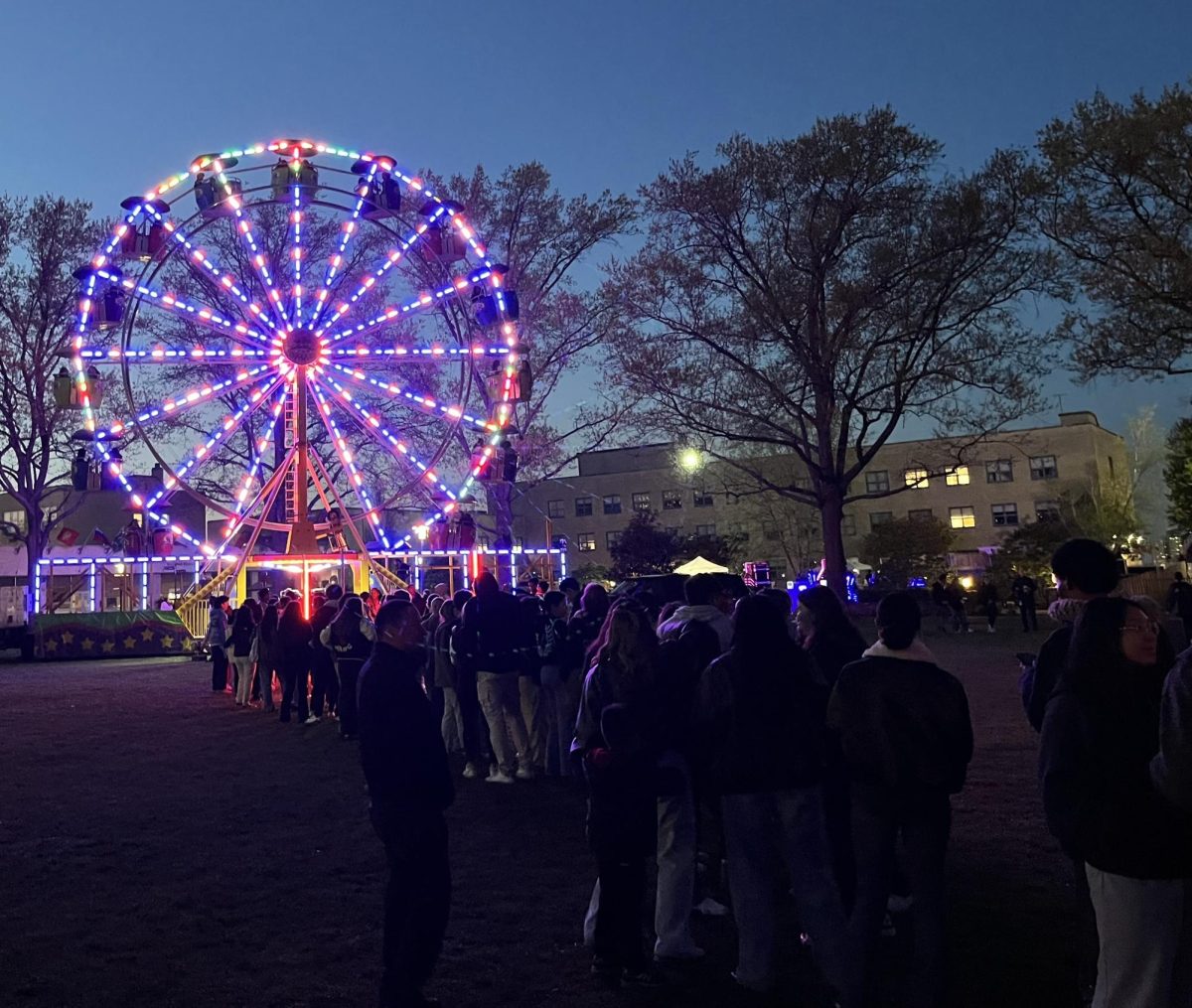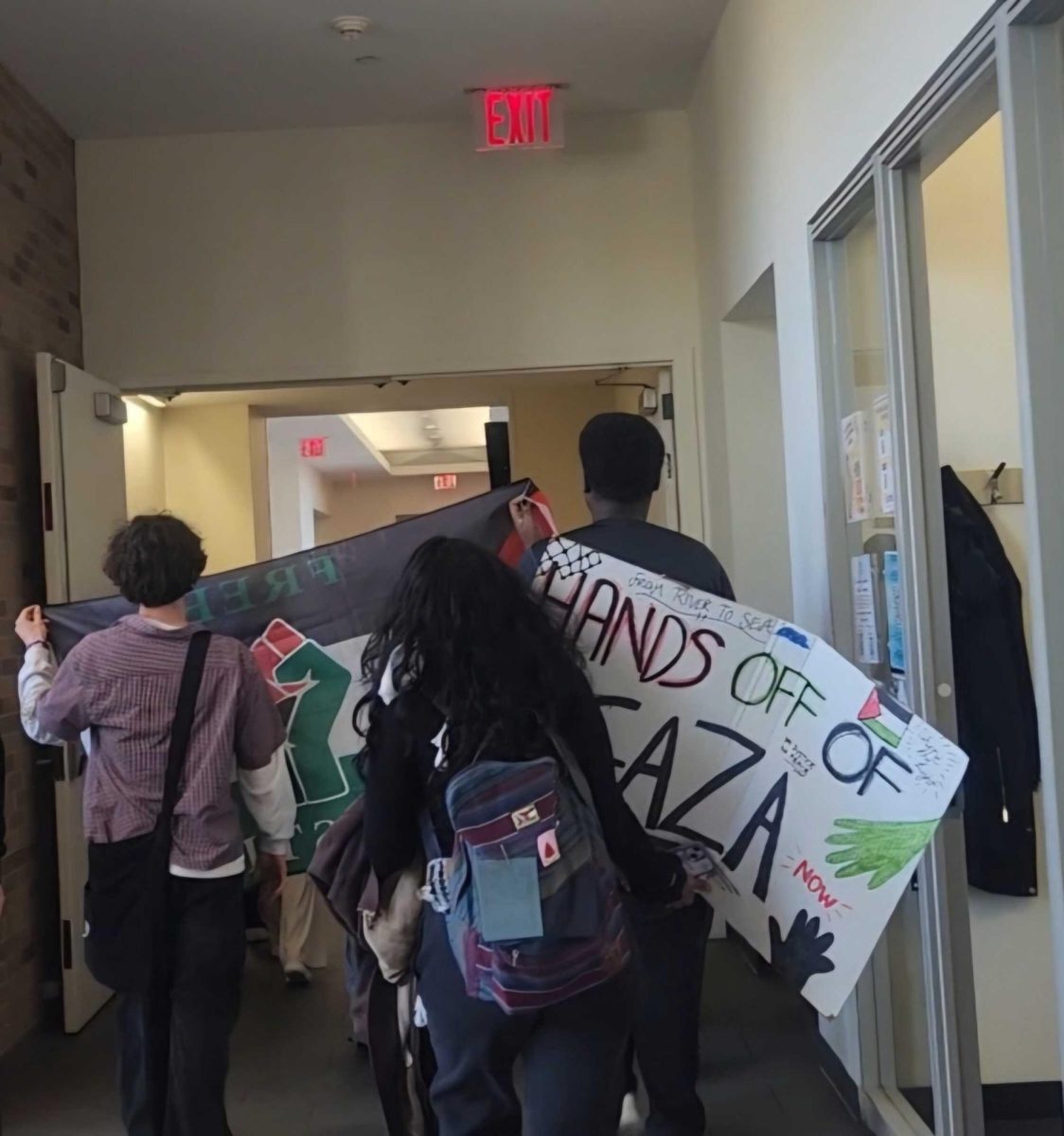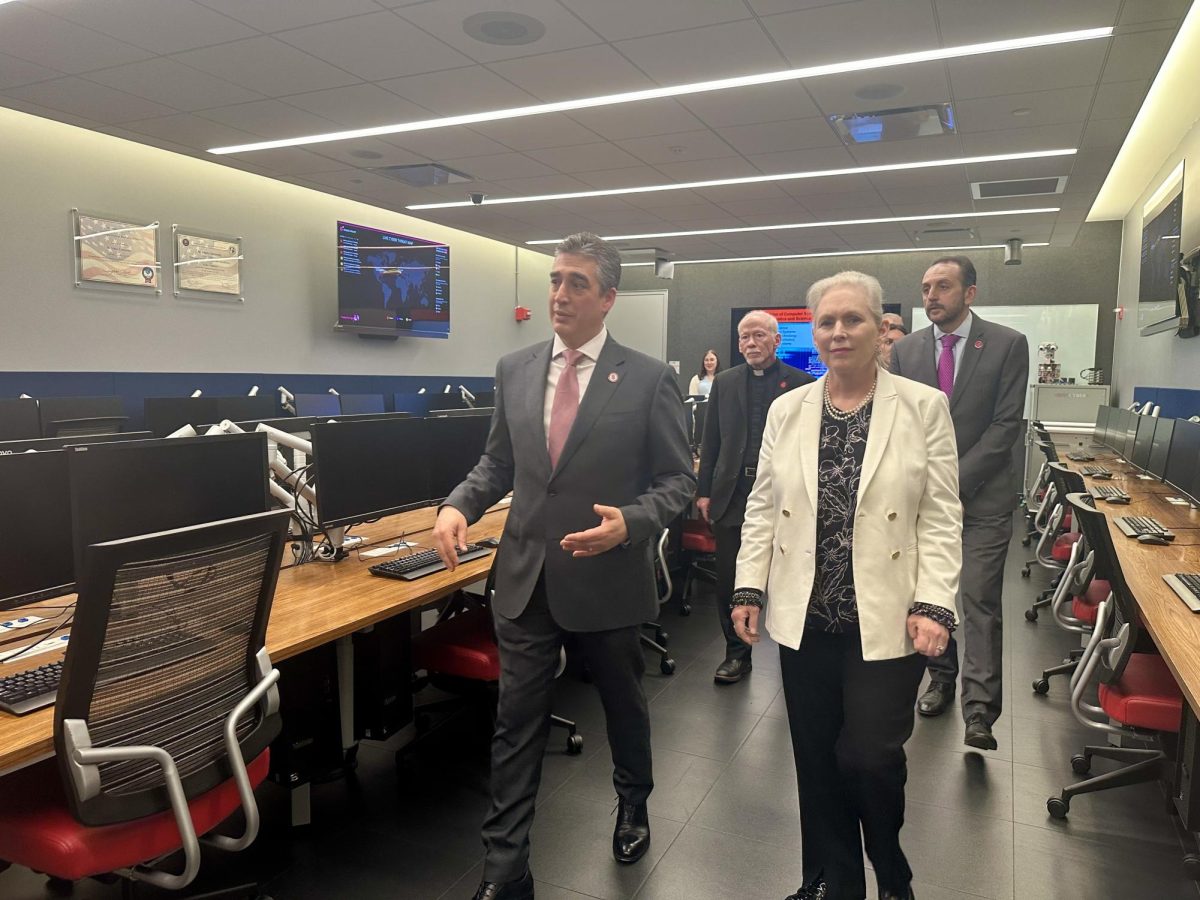Michael Arad, architect of Ground Zero memorial ‘Reflecting Absence’, spoke to students on Nov. 29 in The D’Angelo Center.
Arad designed the $700 million memorial in remembrance more than 3,000 victims of the World Trade Center attacks of 1993 and 2001, United 93 crash in Shanksville, Penn. and the Pentagon.
He designed the memorial as the result of winning the World Trade Center Site Memorial Competition in 2003, which solicited more than5,000 entries from 63 nations. Arad had previously worked for Kohn Pedersen Fox, erecting the 108-story Station Tower in Hong Kong, and more recently a partner at Handel Architects.
A native of Israel and now a resident of New York City, Arad was introduced to his audience by Dr. Andrea Licari, of the College of Professional Studies. Licari stressed the effect that the 2001 attacks had on the inaugural year of the Manhattan campus, just blocks from Ground Zero.
Licari introduced Provost Julie Upton, who spoke on handling the attacks from the St. John’s point-of-view, and moving the Manhattan students to the Queens campus, despite an offer from Marymount Manhattan College to house the displaced. Upton stated on the new Manhattan building, though a mere walking distance from Ground Zero, did not suffer any damage from the attacks.
Arad sought to create a site that is a physical representation for what America stands for, as well as a place for remembrance and relaxation.
The memorial consists of acre-sized reflecting pools, poured into by the world’s largest man-made waterfalls. The pools are surrounded by trees “in abacus-like formation to make it more welcoming for a multi-purpose location.”
Arad applauded the “stoic defiance,” displayed by the citizens of New York City in the aftermath of the attacks.
He was also the recipient, along with five others, of the 2006 American Institute of Architects’ Young Architects Award.
“How the names would be arranged was the most difficult part of the process as it galvanised all the families involved.” Arad said.
After multiple ideas for arrangement were scrapped because of unintentional favoring of one victim over another, the arrangement came down to the location and adjacency of the victims. The arrangement debate was the focus of the discussions about the memorial.
Arad stated the intense immediate effect of the attacks “seemed like a demilitarised zone, can you imagine Manhattan without a single car going by?”
Following the completion of the memorial the most touching moment for Arat was “seeing a frail 80-year old lady get out of her wheelchair and exert herself to touch the name of a fallen loved one.”
When discussion was opened to the audience, Arad answered questions from the audience about the memorial. One audience member asked whether the memorial was considered at risk of attack, as the towers it replaced had been. To this Arad responded “the entire city is vigilant to this now. 1993 was a wake-up call that most of us ignored.”
Also questioned on the memorial capacity of “Reflecting Absence,” Arad answered, “it’s what the victim’s families bring, rather than my personal beliefs, whether its faith or quiet introspection.”
Arad’s presentation was closed by Edward La Grassa, Architect and Professor at NYU Graduate School of Real Estate, who stated the retail impact that the memorial would have on New York City. La Grassa said the “memorial is the single largest attraction in NYC, projected to attract 7 million people over the next year.”

















